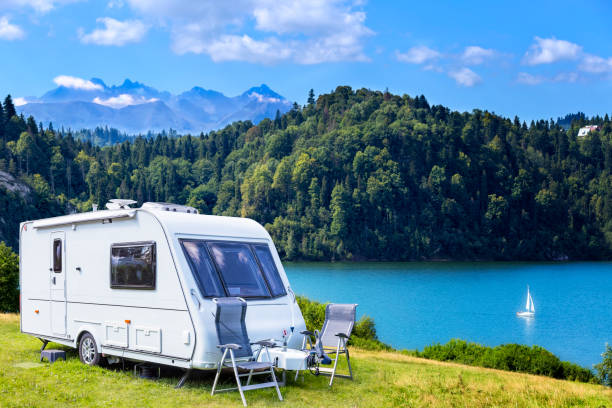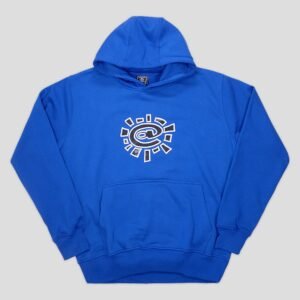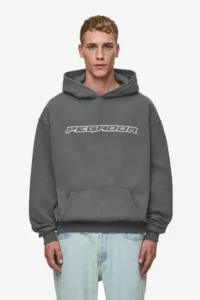Camping is a beloved outdoor activity that allows us to reconnect with nature, escape the hustle and bustle of daily life, and create lasting memories. However, the idea of roughing it in the wilderness can be daunting for some, especially when it comes to comfort. The good news is that with proper planning and the right gear, you can enjoy a comfortable camping experience without sacrificing the essence of outdoor adventure. In this comprehensive guide, we’ll explore various strategies and tips to help you stay comfortable while camping, ensuring that your time in nature is both enjoyable and rejuvenating.
Choosing the Right Campsite
Location and Terrain
Selecting an appropriate campsite is crucial for ensuring a comfortable camping experience. When choosing your location, consider the following factors:
- Flat ground: Look for a level area to set up your tent, as sleeping on an incline can be uncomfortable and may cause you to slide down during the night.
- Natural windbreaks: Seek out areas with natural windbreaks, such as trees or rock formations, to protect your campsite from strong gusts.
- Proximity to water: While it’s convenient to camp near a water source, avoid setting up too close to rivers or lakes to prevent flooding and reduce insect activity.
- Sun exposure: Consider the path of the sun throughout the day and choose a spot that offers shade during the hottest hours.
- Safety: Be aware of potential hazards such as dead trees, loose rocks, or areas prone to flash flooding.
By carefully selecting your campsite, you can create a solid foundation for a comfortable camping experience. Take the time to survey the area and choose a spot that meets your needs while minimizing potential discomforts.

Sleeping Arrangements
Choosing the Right Tent
Your tent is your home away from home when camping, so selecting the right one is essential for comfort. Consider the following factors when choosing a tent:
- Size: Opt for a tent that’s slightly larger than your group size to allow for extra space and gear storage.
- Seasonality: Choose a tent appropriate for the weather conditions you’ll encounter, such as a 3-season tent for mild climates or a 4-season tent for harsh conditions.
- Ventilation: Look for tents with mesh panels and adjustable vents to promote airflow and reduce condensation.
- Ease of setup: Select a tent that’s easy to assemble, especially if you’ll be setting up camp in low light conditions.
- Durability: Invest in a high-quality tent made from durable materials to withstand the elements and provide long-lasting comfort.
Sleeping Gear
Your sleeping setup can make or break your camping comfort. Consider the following items to ensure a restful night’s sleep:
- Sleeping bag: Choose a sleeping bag rated for the lowest expected temperature, and consider a mummy-style bag for added warmth.
- Sleeping pad or air mattress: Invest in a quality sleeping pad or air mattress to insulate you from the cold ground and provide cushioning.
- Camping pillow: Bring a compact, camping-specific pillow or use a stuff sack filled with soft clothing for head support.
- Sleeping bag liner: Add a liner to your sleeping bag for extra warmth and cleanliness.
- Earplugs and eye mask: Pack these items to block out noise and light for a more peaceful sleep.
By investing in quality sleeping gear and selecting the right tent, you can create a cozy and comfortable sleeping environment that will help you wake up refreshed and ready for outdoor adventures.

Clothing and Layering
Dressing for Comfort
Proper clothing is crucial for staying comfortable while camping. Follow these guidelines to ensure you’re prepared for various weather conditions:
- Base layer: Choose moisture-wicking materials like merino wool or synthetic fabrics to keep your skin dry and regulate body temperature.
- Insulating layer: Pack fleece or wool garments to trap warmth close to your body.
- Outer layer: Bring waterproof and breathable jackets and pants to protect against wind and rain.
- Footwear: Invest in sturdy, waterproof hiking boots and pack extra socks to keep your feet dry and comfortable.
- Accessories: Don’t forget items like hats, gloves, and sunglasses to protect against sun, wind, and cold.
Layering Strategies
Mastering the art of layering is essential for maintaining comfort in changing weather conditions. Follow these tips:
- Start with a moisture-wicking base layer to keep your skin dry.
- Add insulating layers as needed, depending on the temperature and your activity level.
- Top it off with a weather-resistant outer layer to protect against wind and rain.
- Adjust your layers throughout the day as conditions change, removing or adding items as necessary.
- Keep extra layers easily accessible in your daypack for quick adjustments on the trail.
By dressing appropriately and utilizing effective layering techniques, you can stay comfortable in a wide range of weather conditions, allowing you to fully enjoy your camping experience.
Campsite Comfort
Creating a Cozy Living Space
Transform your campsite into a comfortable outdoor living area with these tips:
- Set up a shelter: Bring a tarp or pop-up canopy to create a shaded area for relaxing and cooking.
- Create a seating area: Pack lightweight camping chairs or use logs and stumps for natural seating options.
- Organize your gear: Use storage containers or stuff sacks to keep your belongings organized and easily accessible.
- Bring lighting: Pack headlamps, lanterns, and string lights to illuminate your campsite after dark.
- Add comfort touches: Bring items like a small rug or outdoor blanket to create a cozy atmosphere.
Campfire Comfort
A well-managed campfire can provide warmth, light, and a focal point for social gatherings. Follow these guidelines:
- Choose a safe location: Set up your fire pit away from overhanging branches and clear the area of debris.
- Build a proper fire: Use the teepee or log cabin method for efficient burning and easy maintenance.
- Bring appropriate seating: Position camping chairs or logs around the fire at a safe distance.
- Have fire management tools: Keep a bucket of water, shovel, and fire extinguisher nearby for safety.
- Practice Leave No Trace principles: Fully extinguish your fire and dispose of ashes properly before leaving.
By creating a comfortable living space and mastering campfire skills, you can enhance your overall camping experience and create a welcoming environment for relaxation and social gatherings.
Food and Hydration
Meal Planning and Preparation
Proper nutrition is essential for maintaining comfort and energy levels while camping. Consider these tips:
- Plan meals in advance: Create a menu that includes easy-to-prepare, nutritious meals for each day of your trip.
- Pack non-perishable items: Bring foods that don’t require refrigeration, such as dried fruits, nuts, and energy bars.
- Use a cooler: If possible, bring a cooler to store perishable items and keep drinks cold.
- Bring versatile cooking equipment: Pack a camping stove, pots, pans, and utensils suitable for your planned meals.
- Consider one-pot meals: Prepare simple, hearty meals that require minimal cleanup, such as stews or pasta dishes.
Staying Hydrated
Proper hydration is crucial for comfort and safety while camping. Follow these guidelines:
- Bring plenty of water: Pack at least 1 gallon of water per person per day, plus extra for cooking and cleaning.
- Use water purification methods: Bring a water filter, purification tablets, or boil water from natural sources if necessary.
- Stay hydrated throughout the day: Drink water regularly, even if you don’t feel thirsty.
- Pack electrolyte supplements: Bring powdered electrolyte drinks to replenish minerals lost through sweating.
- Monitor urine color: Aim for pale yellow urine as an indicator of proper hydration.
By planning nutritious meals and staying properly hydrated, you can maintain your energy levels and overall comfort throughout your camping trip.
Personal Hygiene and Cleanliness
Maintaining Cleanliness
Staying clean and hygienic while camping is essential for comfort and health. Follow these tips:
- Pack biodegradable soap: Bring environmentally friendly soap for washing hands, dishes, and body.
- Use hand sanitizer: Keep a small bottle of hand sanitizer readily available for quick clean-ups.
- Bring wet wipes: Pack biodegradable wet wipes for easy cleaning when water is scarce.
- Practice proper waste disposal: Follow Leave No Trace principles and pack out all trash and waste.
- Set up a handwashing station: Create a designated area for handwashing near your cooking area.
Managing Personal Hygiene
Maintaining personal hygiene can greatly enhance your comfort while camping. Consider these strategies:
- Bring quick-dry towels: Pack lightweight, fast-drying towels for bathing and drying off.
- Use dry shampoo: Bring dry shampoo to keep your hair clean and fresh between washes.
- Pack dental hygiene essentials: Don’t forget toothbrush, toothpaste, and floss for oral care.
- Manage menstrual hygiene: Bring necessary supplies and sealable bags for proper disposal.
- Consider a solar shower: For longer trips, a portable solar shower can provide a refreshing cleaning option.
By maintaining good hygiene practices, you can feel clean, fresh, and comfortable throughout your camping adventure.

FAQs (Frequently Asked Questions)
Q: How can I stay warm while camping in cold weather?
A: Layer your clothing, use a sleeping bag rated for low temperatures, insulate your sleeping pad, and keep your head and feet warm with appropriate gear.
Q: What’s the best way to deal with insects and bugs while camping?
A: Use insect repellent, wear long sleeves and pants, avoid scented products, and consider setting up a screened shelter or tent with mesh panels.
Q: How can I make my camping mattress more comfortable?
A: Choose a high-quality sleeping pad or air mattress, add a foam topper for extra cushioning, and use a sleeping bag liner for added comfort and insulation.
Q: What are some easy and nutritious camping meal ideas?
A: Consider one-pot meals like chili or pasta, pre-packaged dehydrated meals, wraps with non-perishable fillings, and energy-dense snacks like trail mix and energy bars.
Q: How can I stay clean without access to showers?
A: Use biodegradable wet wipes, bring a portable solar shower, practice regular hand sanitizing, and consider dry shampoo for hair cleanliness.
Q: What’s the best way to store food while camping to prevent attracting wildlife?
A: Use bear-resistant food containers or hang food in a bear bag away from your campsite, keep a clean camp, and never store food in your tent.
Q: How can I make my campsite more comfortable in hot weather?
A: Set up shade structures, choose a naturally shaded campsite, use cooling towels, stay hydrated, and wear light, breathable clothing.
Q: What are some essential items for maximizing comfort while camping?
A: Pack items like a comfortable camping chair, headlamp or lantern, camping pillow, extra layers of clothing, and a multi-tool for various camp tasks.
Final Words
Staying comfortable while camping is entirely possible with proper planning, the right gear, and a few simple strategies. By carefully selecting your campsite, investing in quality sleeping arrangements, mastering the art of layering, creating a cozy living space, planning nutritious meals, staying hydrated, and maintaining good hygiene practices, you can ensure a enjoyable and comfortable outdoor experience.
Remember that comfort in the wilderness often comes down to preparation and adaptability. Embrace the challenges of outdoor living while implementing these tips, and you’ll find yourself fully immersed in the beauty of nature without sacrificing comfort. So pack your gear, head out into the great outdoors, and enjoy a comfortable and memorable camping adventure!










